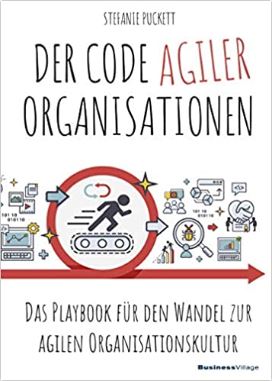Empowerment and self-organisation – good preparation is everything
Agile organisations have adaptability, innovation and speed because teams have maximum control over their own work and can do their best with minimal constraints. It is therefore hardly surprising that agile working methods and principles proclaim to give employees more responsibility and to enable more self-organisation. An idea, by the way, that occupational psychologists have been preaching for decades. But it is often not quite that simple.
Self-organisation reduces bureaucratic pain points
Self-organisation offers a number of advantages:
1. People are deployed optimally.
Team members know each other and can optimally address individual strengths and competencies in the distribution of tasks. As a result, performance increases.
2. Job satisfaction is promoted.
The team can flexibly take into account current individual needs and find pragmatic solutions so that individual circumstances can be taken into account. Job satisfaction increases.
3. Flexibility and room for manoeuvre enables adaptation.
If the team is empowered and empowered to make changes on its own, it can react immediately to changes in the environment or in the needs of the clients. Solutions can be tailored more precisely, ideas can be tried out.
4. The speed increases.
Teams can make decisions themselves. On the one hand, decision-making bottlenecks at higher management levels are eliminated; on the other hand, a lot of work that does not add value is also eliminated. After all, it takes time and effort to prepare information in certain desired formats and create one PowerPoint slide after another, in order to be able to request a decision. Less visible efforts such as navigating micro-politics or lobbying also fall away. Solutions also tend to remain more focused, as each boss no longer has to add his or her two cents to prove their own relevance in the decision-making process.
If you want to give more responsibility to employees, self-organisation is one of the next steps. Valuable time is gained by making decisions autonomously. Creativity and motivation are released for direct value creation. However, those who are afraid to get down to business with empowerment can alternatively start with individual projects first in order to gain positive experience and gradually eliminate the pain points of the organisation.
From the idea to implementation – why it sometimes doesn’t work out that way after all
Empowerment and self-organisation sound good, and many organisations claim it as their motto. But in practice, one often sees other images.
From a psychological point of view, it is clear that individual freedom of action should be as great as possible so that employees have control over their work and can organise the work in the way that suits them best and how they can carry out the work most successfully. However, decision-making authority can vary greatly. Not everyone feels comfortable making decisions themselves or as part of a team, let alone decisions of great consequence. And we don’t always like the results.
Perhaps you have already experienced such a situation yourself: in all the New Work enthusiasm, responsibility is handed over, everyone is highly motivated and then? Nothing happens. Important decisions are not made. Or they are made, but turn out to be wrong. Or they are made, aiming at a different result than originally intended. Or perhaps only a partial result is pursued. And maybe all decisions end up back with the boss.
The end result is disappointment and often failure. Learning opportunity? Yes. But it requires perseverance and determination, which is stronger than the tendency to simply return to the tried and tested. The better way is to prevent failure – especially at the beginning. Through adequate preparation.
Preparing for self-organisation – the three prerequisites
Self-organisation cannot be imposed from above, it has to be formed first, it has to organise itself first. The teams usually know best what they need to do this. It is therefore important to involve the teams in planning the transfer of responsibility. According to the CII model¹, the following three aspects are the prerequisites for successful self-organisation:
- Competence,
- Information,
- Intention.
Competence
Does the team/person actually have the required authority to implement decisions and – if necessary – to enforce them? Does the team or person have the necessary knowledge, skills and experience? If not – is it possible to access these?
The question of capacity should also not be forgotten. Does the person have the time and possibilities?
In one sentence: can and may one do what is necessary to achieve the goal?
Information
Does the person or team have all the necessary information? Is the goal or the definition of done clear? Is it clear how goal achievement can be tracked and measured?
Is the purpose known, the intention? Only then can the team be creative in developing the solution – perhaps there is a better way to achieve the intended goal?
Does the team have access to all the necessary information (e.g. reactions of the customer, developments in the market) to be able to make informed decisions? Does one know how one’s own project affects other projects or departments and where work is perhaps being done on a similar topic in order to initiate exchanges and possibly use synergy effects?
In one sentence: Is the necessary knowledge available or do you know where to find it?
Intention
Are people convinced that they are pursuing an important and meaningful project? Or are there doubts about the usefulness of the intended outcome? Is the objective perceived as unrealistic? Is the intention behind the project mistrusted?
For decisions to be made in the spirit of the goal, it is important that the decision-makers really stand behind the goal. They must also feel committed to the values of the organisation. Conflicts of goals must be avoided.
In one sentence: Does the person/team share the goal?
Get started and pause regularly
Once the three prerequisites have been met, it is time to get started. Since it is often impossible to foresee all developments at the beginning, it is important to pause regularly at short intervals and reflect along the three criteria.
A look at all three aspects helps to avoid blind spots, to recognise possible problems quickly and to readjust immediately. The topic of information in particular must be on the agenda again and again, as it is often only in the process of doing that it becomes apparent what information is needed, what new sources of data open up, what interesting developments are encountered. Especially if the goal or orientation of the project changes, it must be re-evaluated. The best way is to evaluate experiences and findings together and get better step by step. Try it out!
Notes:
[1] If you would like to learn more about this topic including the CII model, we would like to recommend the latest German language book by Dr. Stefanie Puckett: Der Code agiler Organisationen: Das Playbook für den Wandel zur agilen Organisationskultur.
Dr Stefanie Puckett has published another post on the t2informatik Blog:

Dr. Stefanie Puckett
Dr. Stefanie Puckett is a graduate psychologist with about 15 years of international experience in consulting, coaching and human resources management. She has lived in America, Switzerland and Germany, and has worked for several consulting firms, in management and global roles for a Fortune 500 company, as well as running her own business.
Dr. Puckett has worked with over 500 executives and has conducted several hundred workshops, seminars, coaching and consulting projects. She currently works as a Director and Principal Consultant at metaBeratung in Munich, where she focuses on agile leadership and supports clients in agile transformation. She is a certified Executive Coach (CEC), Board Certified Coach (BCC) and agile Certified Practitioner (ACP-PMI).

